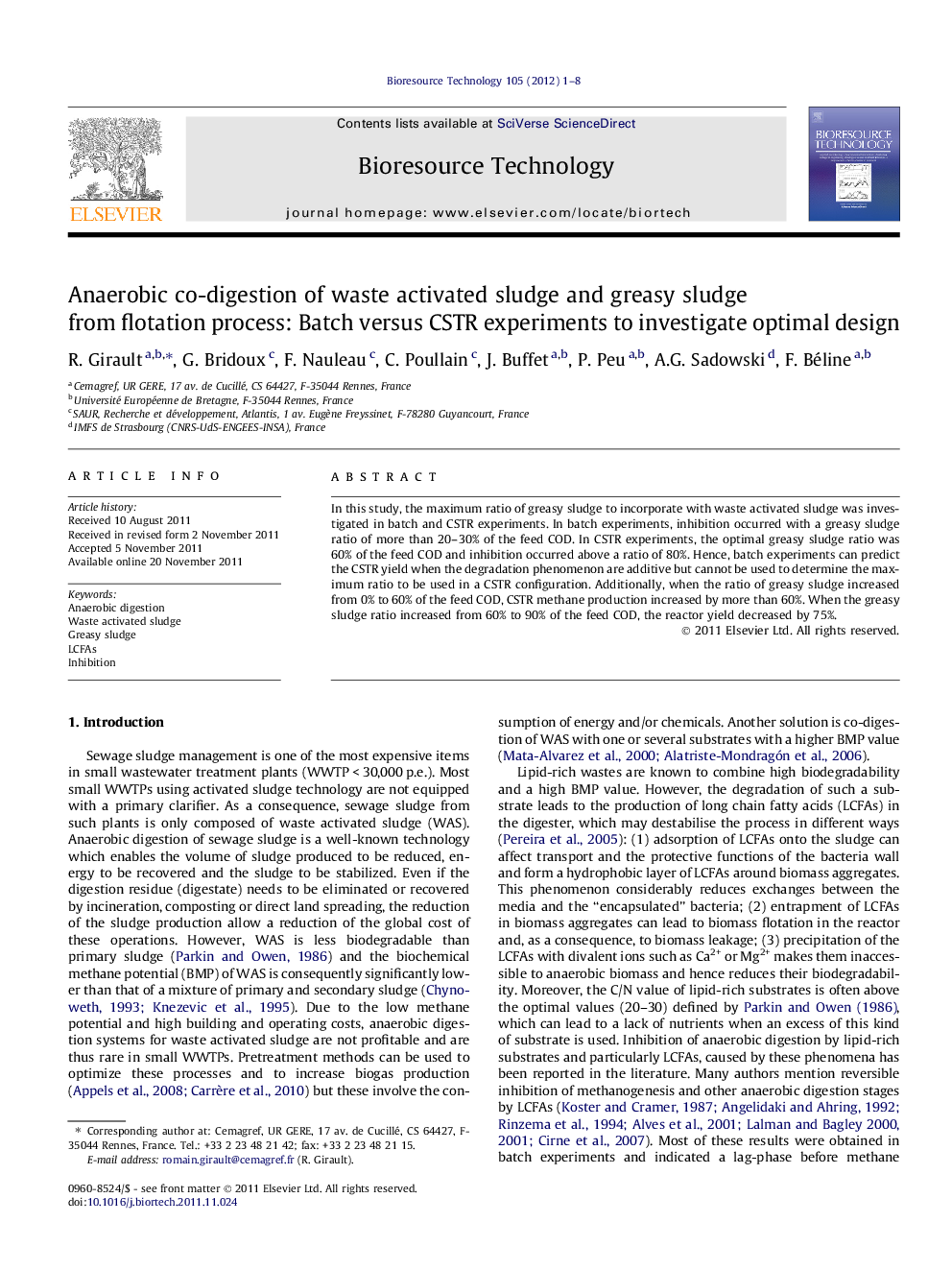| Article ID | Journal | Published Year | Pages | File Type |
|---|---|---|---|---|
| 681581 | Bioresource Technology | 2012 | 8 Pages |
In this study, the maximum ratio of greasy sludge to incorporate with waste activated sludge was investigated in batch and CSTR experiments. In batch experiments, inhibition occurred with a greasy sludge ratio of more than 20–30% of the feed COD. In CSTR experiments, the optimal greasy sludge ratio was 60% of the feed COD and inhibition occurred above a ratio of 80%. Hence, batch experiments can predict the CSTR yield when the degradation phenomenon are additive but cannot be used to determine the maximum ratio to be used in a CSTR configuration. Additionally, when the ratio of greasy sludge increased from 0% to 60% of the feed COD, CSTR methane production increased by more than 60%. When the greasy sludge ratio increased from 60% to 90% of the feed COD, the reactor yield decreased by 75%.
► Greasy sludge is a suitable co-substrate to waste activated sludge digestion. ► Inhibitions occur with high greasy sludge ratio in batch and CSTR experiments. ► Inhibitions occur at a lower greasy sludge ratio in batch experiments than in CSTR. ► Batch experiments are not suitable to determine the maximal ratio of co-substrate. ► Performance drops for high greasy sludge ratios are induced by LCFA accumulations.
